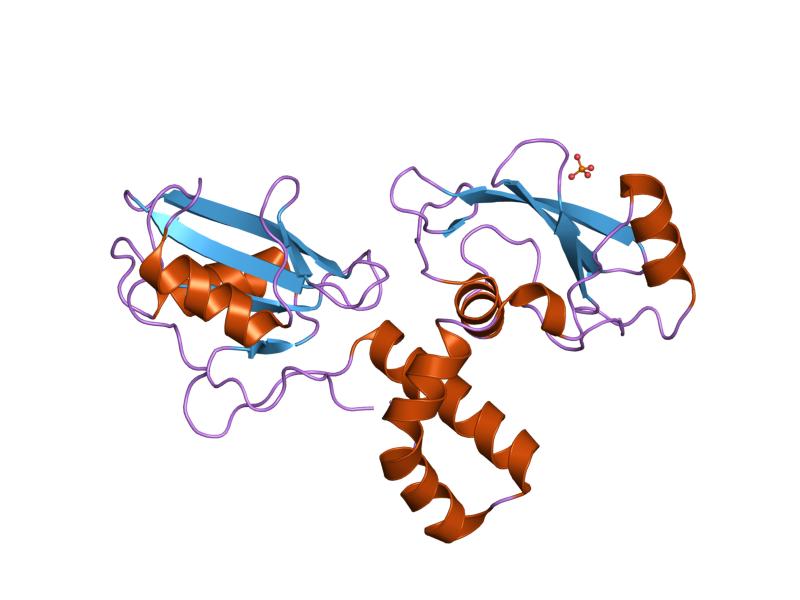|
Dwarfism
Dwarfism is a condition wherein an organism is exceptionally small, and mostly occurs in the animal kingdom. In humans, it is sometimes defined as an adult height of less than , regardless of sex; the average adult height among people with dwarfism is , although some individuals with dwarfism are slightly taller. ''Disproportionate dwarfism'' is characterized by either short limbs or a short torso. In cases of ''proportionate dwarfism'', both the limbs and torso are unusually small. Intelligence is usually normal, and most have a nearly normal life expectancy. People with dwarfism can usually bear children, though there are additional risks to the mother and child dependent upon the underlying condition. The most common and recognisable form of dwarfism in humans (comprising 70% of cases) is achondroplasia, a genetic disorder whereby the limbs are diminutive. Growth hormone deficiency is responsible for most other cases. Treatment depends on the underlying cause. Those ... [...More Info...] [...Related Items...] OR: [Wikipedia] [Google] [Baidu] |
Achondroplasia
Achondroplasia is a genetic disorder with an autosomal dominant pattern of inheritance whose primary feature is dwarfism. In those with the condition, the arms and legs are short, while the torso is typically of normal length. Those affected have an average adult height of for males and for females. Other features can include an enlarged head and prominent forehead. Complications can include sleep apnea or recurrent ear infections. Achondroplasia includes short-limb skeletal dysplasia with severe combined immunodeficiency. Achondroplasia is caused by a mutation in the fibroblast growth factor receptor 3 (''FGFR3'') gene that results in its protein being overactive. Achondroplasia results in impaired endochondral bone growth (bone growth within cartilage). The disorder has an autosomal dominant mode of inheritance, meaning only one mutated copy of the gene is required for the condition to occur. About 80% of cases occur in children of parents of average stature and resul ... [...More Info...] [...Related Items...] OR: [Wikipedia] [Google] [Baidu] |
Short Stature
Short stature refers to a height of a human which is below typical. Whether a person is considered short depends on the context. Because of the lack of preciseness, there is often disagreement about the degree of shortness that should be called ''short''. Dwarfism is the condition of being very short, often caused by a medical condition. In a medical context, short stature is typically defined as an adult height that is more than two standard deviations below a population’s mean for age and gender, which corresponds to the shortest 2.3% of individuals in that population. The median or typical adult height in developed countries is about for men and for women. Causes Shortness in children and young adults nearly always results from below-average growth in childhood, while shortness in older adults usually results from loss of height due to kyphosis of the spine or collapsed vertebrae from osteoporosis. The most common causes of short stature in childhood are constitutiona ... [...More Info...] [...Related Items...] OR: [Wikipedia] [Google] [Baidu] |
Midget
Midget (from ''midge'', a tiny biting insect) is a term for a person of unusually short stature that is considered by some to be pejorative due to its etymology. While not a medical term like "dwarfism", a medical condition with a number of causes including achondroplasia, there is overlap, particularly in proportionate dwarfism. The word has a history of association with the performance arts as little people were often employed by acts in the circus, professional wrestling and vaudeville. The term may also refer to anything of much smaller than normal size, as a synonym for "miniature" or "mini", such as midget cell, midget crabapple, midget flowerpecker, midget submarine, MG Midget, Daihatsu Midget, and the Midget Mustang airplane; or to anything that regularly uses anything that is smaller than normal (other than a person), such as midget car racing and quarter midget racing. "Midget" may also reference a smaller version of play or participation, such as midget golf ... [...More Info...] [...Related Items...] OR: [Wikipedia] [Google] [Baidu] |
Hypochondroplasia
Hypochondroplasia (HCH) is a developmental disorder caused by an autosomal dominant genetic defect in the fibroblast growth factor receptor 3 gene ('' FGFR3'') that results in a disproportionately short stature, micromeliaupdate 2013 and a head that appears large in comparison with the underdeveloped portions of the body. It is classified as short-limbed dwarfism. Signs and symptoms Individuals affected by this disorder appear normal at birth. As the infant grows, however, their arms and legs do not develop properly, and their body becomes thicker and shorter than normal. The following are characteristics consistent with this condition: * Brachydactyly * Short stature * Micromelia * Skeletal dysplasia * Abnormality of femur Cause Hypochondroplasia is transmitted as an autosomal dominant trait affecting the ''FGFR3'' gene on chromosome 4p16.3. There is currently no cure for this condition. Pathophysiology This disorder results from mutations in the proximal tyrosine kinase dom ... [...More Info...] [...Related Items...] OR: [Wikipedia] [Google] [Baidu] |
Spinal Stenosis
Spinal stenosis is an abnormal narrowing of the spinal canal or neural foramen that results in pressure on the spinal cord or nerve roots. Symptoms may include pain, numbness, or weakness in the arms or legs. Symptoms are typically gradual in onset and improve with leaning forward. Severe symptoms may include loss of bladder control, loss of bowel control, or sexual dysfunction. Causes may include osteoarthritis, rheumatoid arthritis, spinal tumors, trauma, Paget's disease of the bone, scoliosis, spondylolisthesis, and the genetic condition achondroplasia. It can be classified by the part of the spine affected into cervical, thoracic, and lumbar stenosis. Lumbar stenosis is the most common, followed by cervical stenosis. Diagnosis is generally based on symptoms and medical imaging. Treatment may involve medications, bracing, or surgery. Medications may include NSAIDs, acetaminophen, or steroid injections. Stretching and strengthening exercises may also be useful ... [...More Info...] [...Related Items...] OR: [Wikipedia] [Google] [Baidu] |
Dysplasia
Dysplasia is any of various types of abnormal growth or development of cells ( microscopic scale) or organs (macroscopic scale), and the abnormal histology or anatomical structure(s) resulting from such growth. Dysplasias on a mainly microscopic scale include epithelial dysplasia and fibrous dysplasia of bone. Dysplasias on a mainly macroscopic scale include hip dysplasia, myelodysplastic syndrome, and multicystic dysplastic kidney. In one of the modern histopathological senses of the term, dysplasia is sometimes differentiated from other categories of tissue change including hyperplasia, metaplasia, and neoplasia, and dysplasias are thus generally not cancerous. An exception is that the myelodysplasias include a range of benign, precancerous, and cancerous forms. Various other dysplasias tend to be precancerous. The word's meanings thus cover a spectrum of histopathological variations. Microscopic scale Epithelial dysplasia Epithelial dysplasia consists of an exp ... [...More Info...] [...Related Items...] OR: [Wikipedia] [Google] [Baidu] |
Growth Hormone Therapy
Growth hormone therapy refers to the use of growth hormone (GH) as a prescription medication—it is one form of hormone therapy. Growth hormone is a peptide hormone secreted by the pituitary gland that stimulates growth and cell reproduction. In the past, growth hormone was extracted from human pituitary glands. Growth hormone is now produced by recombinant DNA technology and is prescribed for a variety of reasons. GH therapy has been a focus of social and ethical controversies for 50 years. This article describes the history of GH treatment and the current uses and risks arising from GH use. Other articles describe GH physiology, diseases of GH excess (acromegaly and pituitary gigantism), deficiency, the recent phenomenon of HGH controversies, growth hormone in sports, and growth hormone for cows. Medical uses HGH deficiency in children Growth hormone deficiency is treated by replacing growth hormone. Lonapegsomatropin was approved for medical use in the United State ... [...More Info...] [...Related Items...] OR: [Wikipedia] [Google] [Baidu] |
English-speaking Countries
The following is a list of English-speaking population by country, including information on both native speakers and second-language speakers. List * The European Union is a supranational union composed of 27 member states. The total English-speaking population of the European Union and the United Kingdom combined (2012) is 256,876,220 (out of a total population of 500,000,000, i.e. 51%) including 65,478,252 native speakers and 191,397,968 non-native speakers, and would be ranked 2nd if it were included. English native speakers amount to 13% of the whole population of the EU and the UK, while the percentage of people that speak English "well enough in order to be able to have a conversation", either as first (32%), second (11%) or third (3%) foreign language, was 38%. * When taken from this list and added together, the total number of English speakers in the world adds up to around 1,200,000,000. Likewise, the total number of native English speakers adds up to around 35 ... [...More Info...] [...Related Items...] OR: [Wikipedia] [Google] [Baidu] |
Height Discrimination
Height discrimination (also known as heightism) is prejudice or discrimination against individuals based on height. In principle, it refers to the discriminatory treatment against individuals whose height is not within the normal acceptable range of height in a population. Various studies have shown it to be a cause of bullying, commonly manifested as unconscious microaggressions. Research indicates that the human brain uses height as one factor to measure social status and fitness. Studies have observed that infants as young as 10 months old unconsciously associate height with leadership potential, power, strength and intelligence. Both the cognitive and the unconscious heuristic association between height and the mentioned traits has also been found to be stronger when assessing men than women. Lexicology The term ''heightism'' was coined by sociologist Saul Feldman in a paper titled "The presentation of shortness in everyday life—height and heightism in American society: ... [...More Info...] [...Related Items...] OR: [Wikipedia] [Google] [Baidu] |




